If the WiFi signal from your router can’t reach every corner of your house or office, then using a wireless access point to extend the coverage is the best solution, with Ubiquiti UniFi UAP-AC-PRO and Zyxel NWA1123-AC HD being two great options for both home and small or medium businesses. Obviously, the WiFi mesh systems can be considered an alternative to using a router + access point configuration, but, while they’re great for homes and they’re very user-friendly, one can’t deny that these devices have less features (which makes them less reliable in an SMB environment) and some have a hard time maintaining a reliable throughput when connected via wireless, so you most likely would have to use the Ethernet backhaul feature, basically ending up with a system of access points.
The Ubiquiti UniFi UAP-AC-PRO is the older and probably the most popular wireless access point, its manufacturer being among the first to push a networking device with enterprise-type features at an affordable price (bridging the gap between the consumer and the enterprise hardware), so it’s no surprise that Ubiquiti became the go-to company for reliable WiFi equipment (the founder also had a great marketing experience coming from Apple).
UPDATE 01/02/2019: I have made some corrections to the article (thanks to JMendez for pointing out the inaccuracies).
But, the competition didn’t ignore the increasing demand for affordable access points from SMBs and ZyXel took the opportunity to show its series of wireless access points, from which I chose the Zyxel NWA1123-AC HD that, despite being an AC1600-class networking device (the UAP-AC-PRO is an AC1750-class AP), it can offer a solid wireless connection.
That being said, both wireless access points can be monitored and configured using a controller, both have advanced features suitable for businesses and each device is equipped with its own proprietary take on the mesh technology (can function in a similar manner to the mesh WiFi systems), so let’s see which is the better device.
Note: You can also check the full review of the Ubiquiti UniFi UAP-AC-PRO and the full review of Zyxel NWA1123-AC HD.
Design
The modern wireless access point has given up its external antennas and it focuses more towards being as unobtrusive as possible, therefore easily blending in with the rest of the room (the minimalist traits are still in trend). Both the Ubiquiti UniFi UAP-AC-PRO and Zyxel NWA1123-AC HD have gone for a neutral look and, since they’re designed to be mounted on the ceiling, each of these devices resembles a flush-mount light: the UAP-AC-PRO is completely round and flat, while the NWA1123-AC HD went for a hexagonal shape with rounded corners.
But there is one fundamental difference between the two access points which becomes noticeable when you take both devices in hand: Ubiquiti made the UAP-AC-PRO completely from a hard plastic, while Zyxel decided to keep the top surface from plastic and the lower body from a zinc alloy. Obviously, this makes the NWA1123-AC HD a lot heavier than the UniFi UAP-AC-PRO (it weighs 1.65 lbs, so it’s more than twice heavier than Ubiquiti, at its 0.77 lbs).
Another significant difference is the size, the UAP-AC-PRO measuring 7.74 x 7.74 x 1.38 inches and the footprint of the NWA1123-AC HD is 8.31 x 8.78 x 1.54 inches, so Zyxel leans slightly more towards the SMBs with its more industrial feel, while Ubiquiti is a bit more consumer-friendly with its lightweight, flat case. At the same time, both devices are also covered by a white matte finish and both went for a single LED approach: Ubiquiti lets it shine from the circular canal from the top of the device and Zyxel decided to go with something more unassuming, so it added the LED below the carved-in logo, interrupting the circular glossy canal from the top surface (the LED on the Ubiquiti does look better, though).
The UAP-AC-PRO is advertised as being weather-resistant and to accomplish this, Ubiquiti sealed off the entire device (to access the ports area, you have to remove a large silicone cover), but, unlike the Open Mesh A60 which had silicone seals everywhere, I’m not really convinced by UAP-AC-PRO’s ruggedness and I would go for something especially dedicated to withstand outdoor conditions (something like the DrayTek VigorAP 920RP).
So, since Ubiquiti didn’t leave any cut-outs on its UAP-AC-PRO, the device is prone to overheating and, while I tested it, it did get hot on the bottom side, near the label. Zyxel NWA1123-AC HD is not advertised as being suitable for outdoor deployment and, similarly to the UAP-AC-PRO, it lacks any ventilation holes which would have suggested a proper heat management (unlike the TP-Link EAP245, which is very thick, but it is one of those rare APs with ventilation cut-outs). But, despite that, the NWA1123-AC HD barely got warm even under stress and to accomplish that, Zyxel took advantage of the zinc alloy that has proven to be fantastic for dissipating the heat from this type of devices.
One common element between the two access points is the lack of silicone feet on the bottom of the case, so, neither are suitable to be kept on a flat surface (after you connect the Ethernet cables, the APs can easily slide off the table) and the ceiling/wall mounting is pretty much the most suitable option (as expected, the manufacturers do offer the mounting kit inside the package).
As I said before, both access points are equipped with a single LED indicator that shows the status of the device and of the connection. Ubiquiti UAP-AC-PRO has positioned it in such as way that it manages to create a ring of light: the LED will be solid blue when the AP is working properly and, if it will quickly flash blue, then the device is upgrading the firmware; a solid white LED indicates that the AP is not yet configured, while a steady blue LED with occasional flashing indicates that the UAP-AC-PRO is in an isolated state.
The LED light on the Zyxel NWA1123-AC HD will be solid green when the device is working properly and solid red means that the access point has encountered an error; the LED will alternate between red and green when the AP is being configured and will turn to solid green after the setup process is concluded. Zyxel’s LED is slightly more intuitive than the LED on the Ubiquiti UAP-AC-PRO, but the fact still remains that the user won’t really understand what the colours mean unless it constantly consults the manual.
On the bottom of the Ubiquiti UAP-AC-PRO, underneath the silicone cover, you can find the ports area: from the right, there’s a Main Ethernet Gigabit port which can be used to connect to a PoE switch / injector (supports PoE+ 802.3at), a USB 2.0 port that can only be used to connect the access point to a PA system and next to it, there’s a small Reset button and a Secondary Ethernet Gigabit port (to either connect to other UAPs or to wired clients). Zyxel has decided to position its ports on a cut portion from the bottom side of the case: from the left, there’s a 4-Pin serial Console port and a dedicated grounding screw; next to them, there’s a LAN1 Ethernet Gigabit port (to connect additional wired clients), an Uplink/PoE Ethernet Gigabit port (supports 802.3at/af PoE standards – useful to power up your device without relying on a power cable), a small Reset button, a Kensington security slot and a 12V DC power port (if you don’t have a PoE switch or PoE adapter).
Verdict: Both devices are designed using a minimalist approach, so they won’t attract much attention when mounted on the ceiling and both access points offer the necessary number of Ethernet ports, but the Ubiquiti UAP-AC-PRO clearly wins from the aesthetic point of view especially because of the circular LED light. At the same time, despite being larger, the Zyxel NWA1123-AC HD feels more robust, it is a lot better at the heat management and it does offer two ways to connect your device (via PoE or power cable), so it wins this round.
ALSO CHECK OUT: TP-LINK EAP245 vs UBIQUITI UNIFI UAP-AC-PRO
Hardware
In terms of internal hardware, Zyxel decided to equip the NWA1123-AC HD with a Broadcom BCM4752B0KRFBG chip (900MHz), 256 MB of RAM (from Winbond), 256 MB of flash memory (from Macronix) and a Realtek RTL8363NB switch controller. Additionally, the access point uses the Broadcom BCM47452 2×2 802.11b/g/n wireless chip along with a BCM43525KMMLG SoC for the wireless radio bands.
The Ubiquiti UAP-AC-PRO is built on the Qualcomm platform, so it features an Atheros QCA9563 chip (750 MHz), 128 MB of RAM, 16 MB of flash memory and a Qualcomm Atheros AR8337 switch controller. Furthermore, the wireless access point takes advantage of the Qualcomm Atheros QCA9880 for the 5GHz radio and the Qualcomm Atheros QCA9563 for the 2.4GHz radio band.
The Zyxel NWA1123-AC HD features a maximum theoretical data transfer rate of 1,300 Mbps on the 5GHz radio band, while on the 2.4GHz radio, the maximum theoretical data transfer rate is 300 Mbps which means that the device is an AC1600-class access point. The Ubiquiti UAP-AC-PRO is an AC1750-class access point, which means that on the 2.4GHz radio, the maximum theoretical data transfer rate is 450 Mbps, while the maximum theoretical data transfer rate on the 5GHz band is 1,300 Mbps.
Verdict: After I tested both devices, it became clear that the 2.4GHz band advantage of the UAP-AC-PRO makes a small difference, but the better RAM and increased amount of flash memory on the Zyxel NWA1123-AC HD may have a heavier impact, so Zyxel also wins this round.
ALSO CHECK OUT: UBIQUITI UNIFI UAP-AC-PRO vs OPEN MESH A60
Features and Performance
The wireless access point has been, for a long time, the preferred option for covering those difficult spots in your home with WiFi and it intends to remain this way since it has adopted some of the features that are very popular with the WiFi mesh system right now (although the Open Mesh has implemented this tech before the emergences of the likes of Eero first gen or Google WiFi). So, the Ubiquiti UniFi UAP-AC-PRO has included the Wireless Uplink to its pack of features and it doesn’t call it mesh because it is proprietary (won’t work outside the UniFi environment) and the Zyxel NWA1123-AC HD shyly added its own variant of this technology and named it AP Smart Mesh.
Both of these features follow the same premise and try to accomplish the same thing in pretty much the same way, but as said before, they’re limited to work only with devices from the same manufacturer (or even series). So, you can expect that, using multiple UniFi or Zyxel access points, the mesh network (yes, I’m going to call it like that) analyses all the connected nodes and, depending on the signal strength, the number of connected devices, the interferences (and so on), it creates optimized paths for the data. Furthermore, the mesh network will also detect any added node and it will immediately adopt it and use it to create new paths for the data; in case a node goes offline, the network automatically finds the most convenient access point in the vicinity and uses it to carry the data to its destination (thus ensuring that the user experiences no downtime).
Besides the proprietary mesh tech, both access points have also implemented some form of Fast Roaming and, in the case of the Zyxel NWA1123-AC HD, it uses the 802.11k/v Assisted roaming, while Ubiquiti decided to simply take inspiration from the Fast BSS Transition (802.11r) and create its own variant which will work fine with older clients. Since it is the newer device, it’s no surprise that the NWA1123-AC HD has added some newer features, such as the MU-MIMO which has the role of ensuring that multiple clients can be served at the same time instead of letting them compete for the bandwidth, but, unfortunately, this tech is not really widespread and the regular user may not really be able to use it in its full-form.
In order to test the wireless performance of the two access points, I used one laptop as a server and a Desktop computer equipped with an ASUS PCE-AC88 WiFi adapter as the client. The devices were tested indoors in various points inside the house from the server to the client and vice-versa. So, using the Ubiquiti UAP-AC-PRO, connected to the 5GHz network and from the client to the server, I managed to measure an average of 440 Mbps at no more than 5 feet from the AP, while, at 30 feet, the speed went down to 302 Mbps. From the server to the client, I measured an average of 258 Mbps at about 5 feet, while at 30 feet, I measured around 170 Mbps. The Zyxel NWA1123-AC HD had a slightly better performance and, from the client to the server, at 5 feet, I measured an average of 489 Mbps, while at 30 feet, the speed decreased to 303 Mbps. From the server to the client, I measured an average of 266 Mbps at 5 feet and an average of 190 Mbps at 30 feet.
On the next step, I decided to switch to the 2.4GHz network and Ubiquiti did a great job: from the client to the server, I was able to measure an average of 107 Mbps at 5 feet (but I measured 148 at 15 feet), while at 30 feet, the speed returned to 106 Mbps. From the server to the client, at 5 feet, I measured 101 Mbps (again, at 15 feet, I saw a better throughput at 108 Mbps) and at 30 feet, I measured around 90.5 Mbps. In the case of Zyxel NWA1123-AC HD, from the client to the server, I measured an average of 120 Mbps (at 15 feet, it remained constant at 119 Mbps) and, at 30 feet, I saw 90.5 Mbps. From the server to the client, at 5 feet, I measured around 103 Mbps and at 30 feet, the speed went down to 91.4 Mbps.
Verdict: Overall, the wireless performance of both access points was very similar, with Ubiquiti occasionally outperforming Zyxel on the 2.4GHz network, but Zyxel has maintained a slightly better throughout on the 5GHz network. Furthermore, the Zyxel NWA1123-AC HD does come with newer technologies, so it wins this round, but not by much.
ALSO CHECK OUT: BEST WIRELESS ACCESS POINTS
Setup and Software
While less difficult and more intuitive than the enterprise access points, the Ubiquiti UniFi UAP-AC-PRO and Zyxel NWA1123-AC HD focus more towards offering a centralised option for businesses to easily monitor and configure multiple access points and gateways (the adoption process in the controller does require a minimum of technical know-how). Still, both Zyxel and Ubiquiti do have a standalone mode for their wireless APs which is useful if you use it in a home environment and don’t care about using a controller.

Mark is a graduate in Computer Science, having gathered valuable experience over the years working in IT as a programmer. Mark is also the main tech writer for MBReviews.com, covering not only his passion, the networking devices, but also other cool electronic gadgets that you may find useful for your every day life.

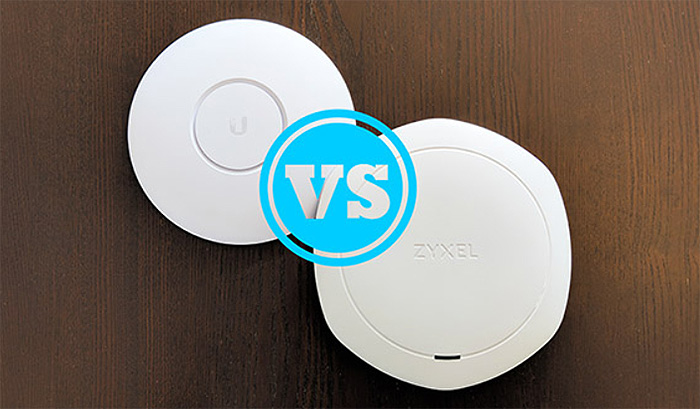
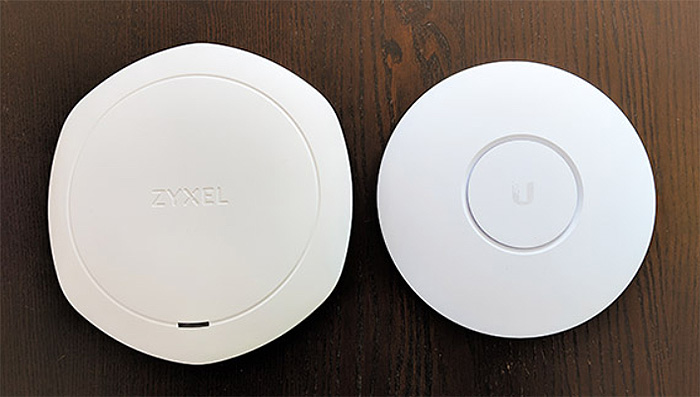
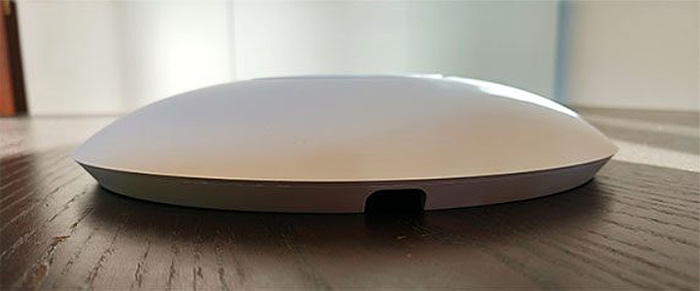
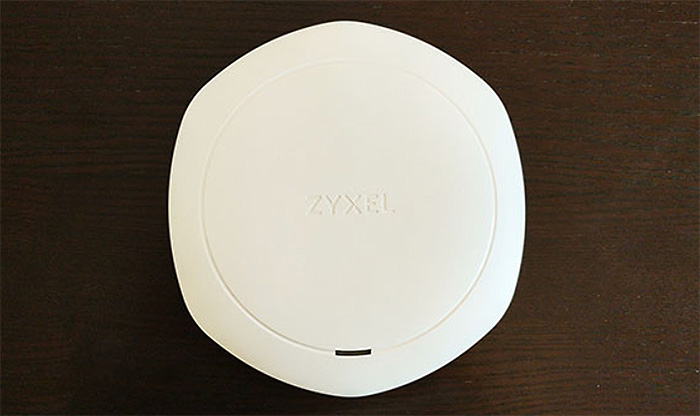
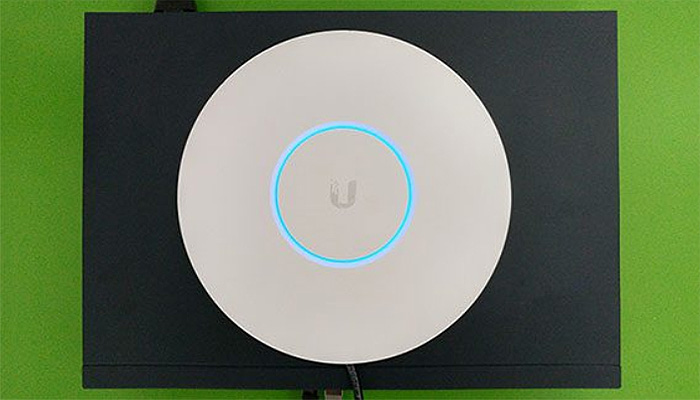
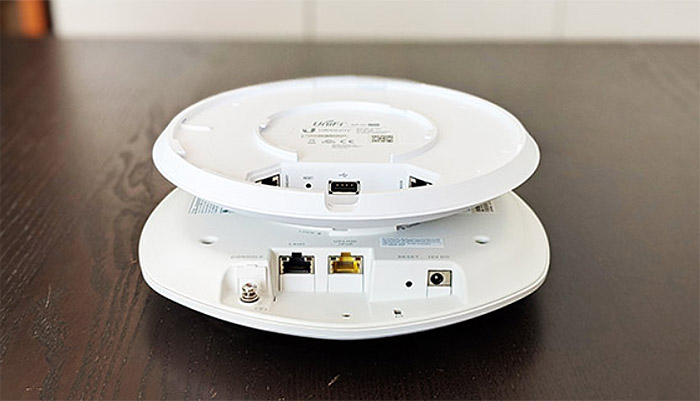
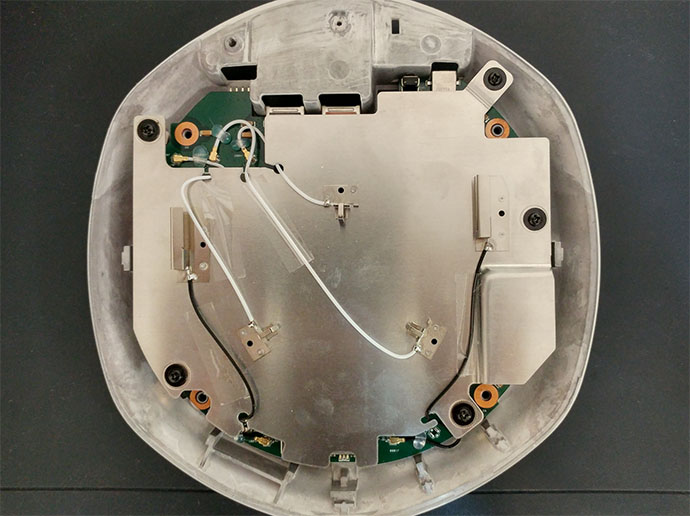
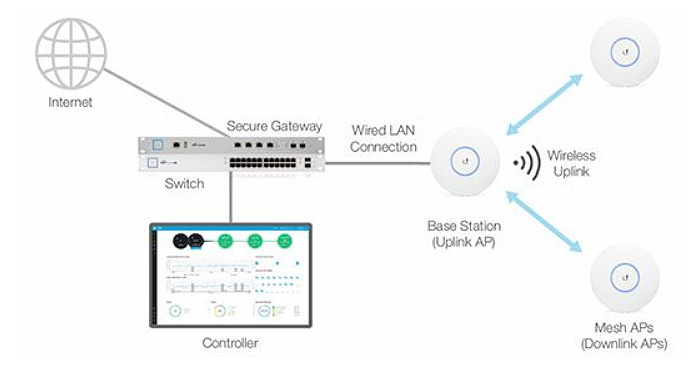
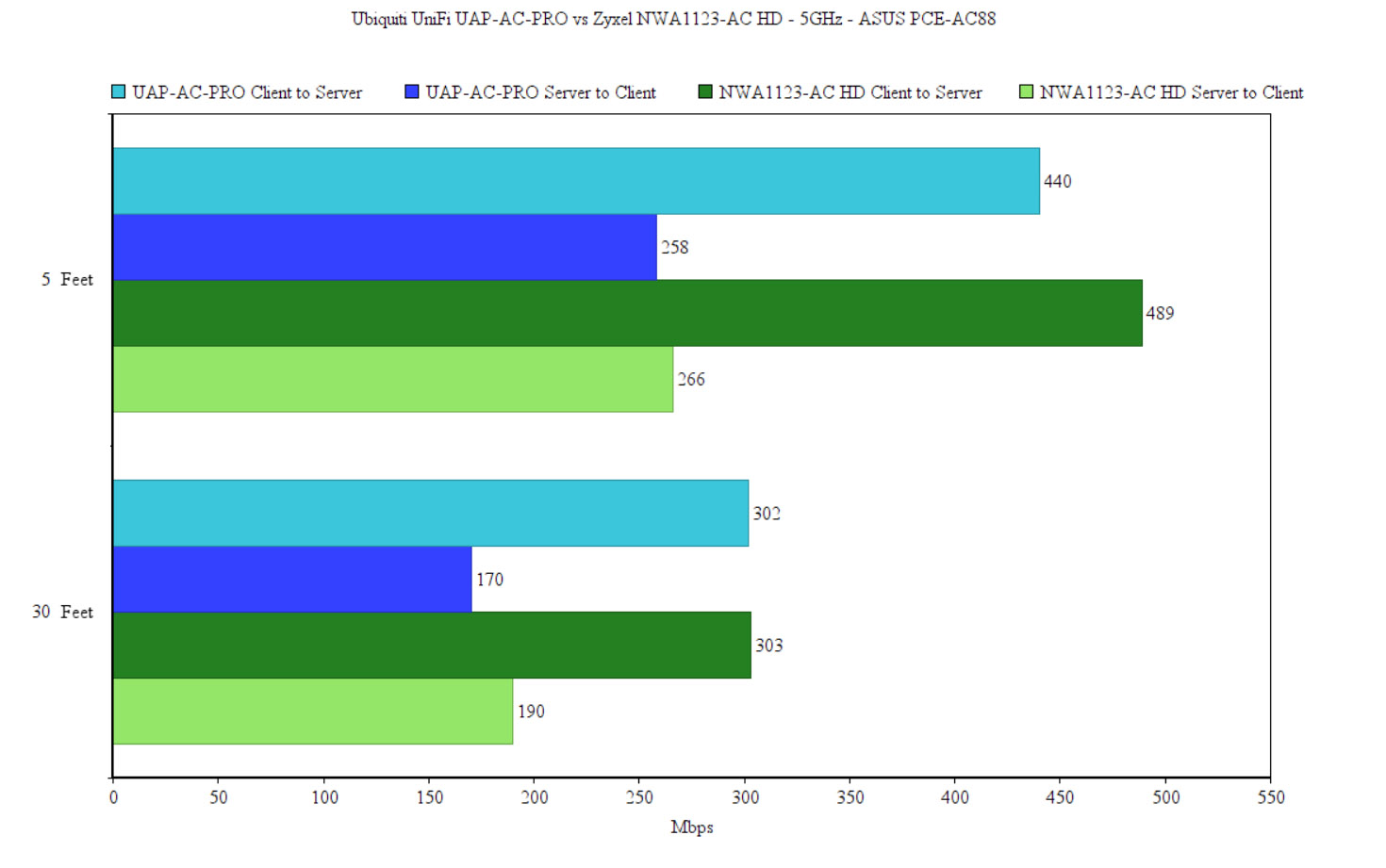
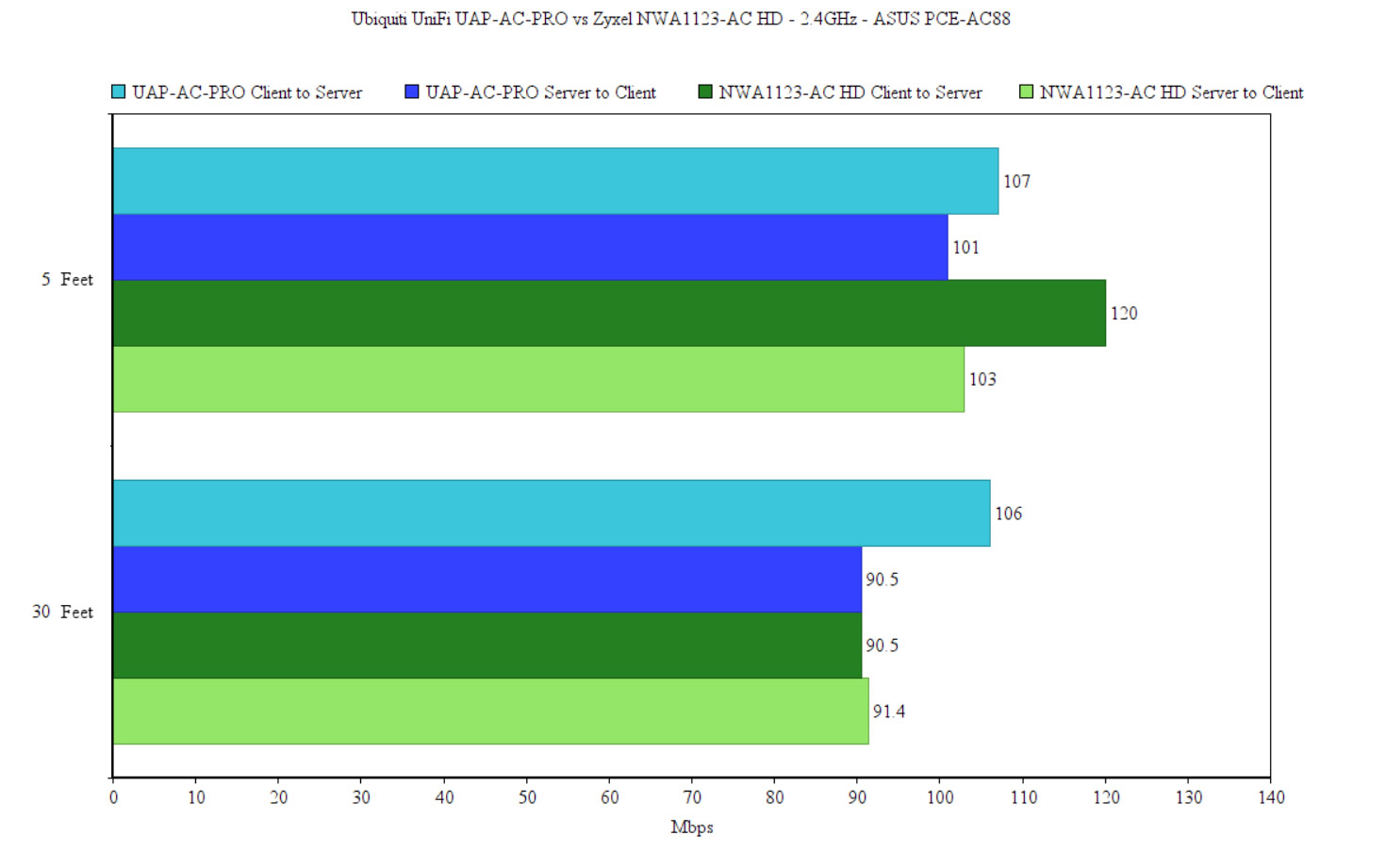
Another awesome comparison!
For this one I have some questions, maybe someone can help to clarify. I have checked the specs for both devices and found out that the Zyxel NWA1123-AC HD is 2×2 MIMO for 2.4Ghz while UAP-AC-PRO is 3×3, is it possible that this is why the UAP-AC-PRO slightly outperform in 2.4Ghz in 30 feet? I will be interesting to see the results for the PRO version of both vendors.
And for Zyxel controller, you mentioned “you will need to always run an instance of the controller on your host machine” where can I find this software? I have been looking for it on their website but everything advertised seems to be cloud-based only. Is it only available through sales contact or?
Thanks again for your awesome help! 🙂
For the first question, the NWA1123-AC-HD is indeed 2×2 MIMO on the 2.4GHz, while the UAP-AC-PRO is 3×3 and this can make a difference in the wireless performance. I will try to get my hands on the PRO version from Zyxel as soon as possible and try to do a more ‘fair’ comparison.
As for the second question, it is true that Zyxel only has two options: stand-alone and Cloud-based, so this is a redacting error which I will immediately fix (thank you for pointing it out).
Happy new year to you, too!
Got it! I will have to take a look to Zyxel cloud controller then.
Thanks for making it clear, looking forward to more of your great reviews 🙂